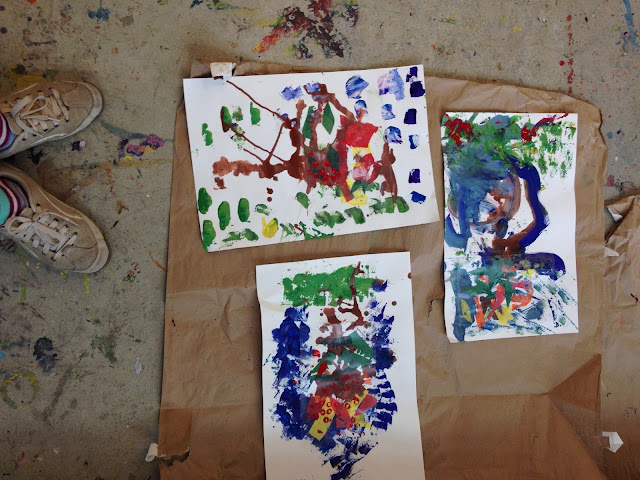My Tuesday afternoon Painting and Drawing class has student's aged 5 and older. This means that the style and skill of the artists in that class varies all along the spectrum of art skills for children.
I should preface this post with an apology for not getting a photograph of the still life set up I had for this class. The time between set up and beginning of class is a bit of a crunch and Time got away from me. I set up boxes of varying height covered in draped fabric, Two glass jars with cut flowers, a pair of beautifully embroidered and beaded purple shoes and an assortment of fossils, minerals and crystals. I am really kicking myself for not thinking to document it until after getting home last night, it looked fabulous.
To start with, we talked about lights and shadow and how they form shapes on the objects that we draw. We looked at examples of still life drawings and discussed how using light and shadow to create form inside a drawing also creates space within the drawing adding dimension. We also talked about looking at our subject and our drawing at the same time as we draw so that our eyes and our hands work together.
Each student, dependant on time drew with charcoal on white paper focusing on shadows. They then drew with white chalk on black paper focusing on highlights and then finished on coloured paper using both the chalk and charcoal incorporating both highlights and shadows.
As you can see from the drawings I chose to display from the lesson, each artist's style is completely different; as is the way that they chose to look at and draw the subject. The older of the artists in the class focused on more detail, really looking at the still life and how the light and shadows worked within the composition. Some artists chose to interpret the still life into their own style of drawing and the younger artists were still able to capture the idea of what was in front of them with their emerging skill set.
I chose my favourites from the finished drawings to display.




















































